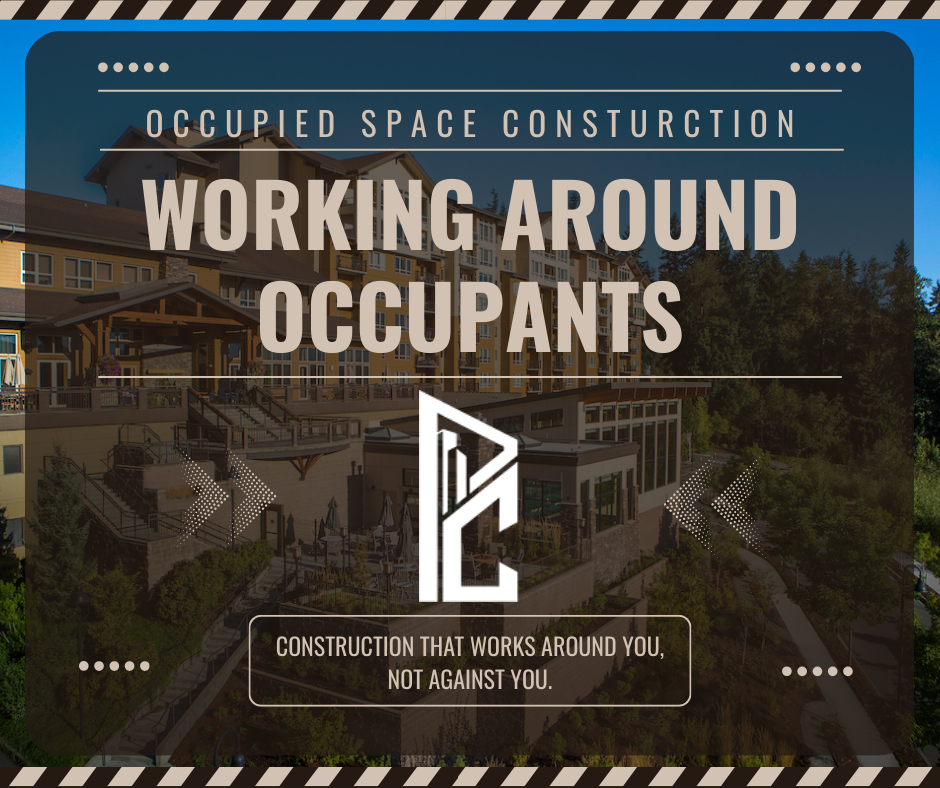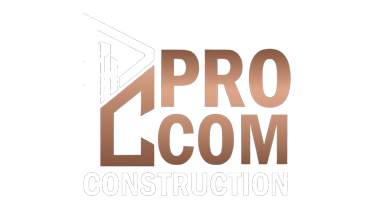
Occupied Space Construction: Working Around Occupants
Construction and renovation projects in occupied buildings present one of the most challenging scenarios in commercial construction: how do you completely transform a space while people are still living, working, or conducting business inside?
At Pro Commercial, we’ve mastered occupied space construction through projects across hospitality, senior care, retail, and commercial sectors nationwide. Here’s what every property owner and developer needs to know about maintaining operations during construction—and why the wrong approach can devastate both your project timeline and your business reputation.
The Occupied Space Challenge
Unlike vacant buildings that can be completely shut down during construction, occupied spaces must maintain essential operations throughout renovation projects. This creates a complex balancing act between construction efficiency and occupant satisfaction.
Occupant Experience Protection
Noise Control: Construction noise during critical hours varies by building type. Hotels require quiet during sleep hours (10 PM – 7 AM), offices need minimal disruption during business hours, and senior living facilities need 24/7 noise management for resident comfort.
Dust and Debris Management: Occupied spaces demand pristine environments. Effective dust control requires negative air pressure systems, sealed construction zones, and enhanced cleaning protocols that exceed standard construction practices.
Access and Safety: Occupants need safe, clean pathways to essential areas. This means creating temporary corridors, maintaining elevator access, and ensuring emergency egress routes remain clear and well-marked.
Phased Construction Strategies
Zone-by-Zone Approach
The most effective strategy for occupied space construction is systematic zone isolation:
Operational Continuity: By taking sections offline in phases, facilities can maintain 60-80% normal operations rather than shutting down completely.
Revenue Protection: Businesses can continue generating income from unaffected areas while construction progresses in isolated zones.
Quality Control: Completing entire sections before moving forward ensures consistent quality and allows for thorough system testing.
Floor-by-Floor Approach
For multi-story buildings, floor-by-floor construction offers distinct advantages:
Noise Isolation: Vertical separation between construction and occupied areas provides better sound and vibration control.
System Integration: Allows for testing and commissioning of major building systems before connecting to occupied floors.
Flexibility: Operations can shift activities to unaffected floors as needed during construction phases.
Specialized Safety Protocols
Enhanced Security Measures
Construction Zone Barriers: Physical barriers must be both secure and appropriate for the facility’s image. Professional temporary walls, decorative screens, and clear signage maintain the property’s appearance while ensuring safety.
Access Control: Construction workers need controlled access that doesn’t compromise occupant security or privacy. This requires coordination with existing security systems and access protocols.
Emergency Procedures: Construction activities cannot interfere with fire safety systems or emergency evacuation procedures. This requires careful coordination with facility management and local emergency services.
Occupant Communication
Advance Notice: Successful projects include communication strategies that set appropriate expectations about construction activities and potential temporary inconveniences.
Alternative Arrangements: When construction affects essential services or amenities, providing alternative solutions maintains occupant satisfaction.
Feedback Systems: Clear channels for addressing legitimate concerns ensure consistent problem resolution.
Coordination with Facility Operations
Staff Integration
Cleaning Protocols: Construction creates additional cleaning requirements that must be coordinated with existing housekeeping and maintenance schedules.
Supply Access: Facility staff need continued access to supply areas, storage spaces, and essential equipment throughout construction.
Operational Scheduling: Coordinating which areas are available for normal operations requires detailed scheduling and communication.
Essential Services Maintenance
Food Service Operations: Cafeterias, kitchens, and dining areas must continue operating during construction, requiring careful coordination around utility work and access restrictions.
Delivery Access: Regular deliveries need uninterrupted access to loading areas and storage facilities.
Service Area Modifications: When construction affects common areas, temporary arrangements must maintain service quality and capacity.
Building Type-Specific Considerations
Senior Living Facilities
Resident Safety: Elderly residents require extra safety considerations, including clear pathways, adequate lighting, and protection from construction hazards.
Medical Equipment: Construction cannot interfere with medical equipment, oxygen systems, or emergency call systems.
Routine Disruption: Minimizing disruption to daily routines, meal times, and therapy schedules is crucial for resident well-being.
Retail Spaces
Customer Access: Shoppers must have safe, attractive access to stores during construction.
Inventory Protection: Merchandise requires protection from dust, debris, and construction activities.
Sales Impact: Construction scheduling must consider peak shopping periods and seasonal business cycles.
Office Buildings
Business Operations: Companies need uninterrupted access to workspaces, meeting rooms, and essential business functions.
Technology Systems: Network infrastructure, phone systems, and internet connectivity must remain operational.
Professional Environment: Construction activities must maintain the professional atmosphere expected by tenants and clients.
Technology and Systems Integration
Utility Management
Phased Shutoffs: Electrical, plumbing, and HVAC shutoffs must be carefully scheduled to minimize impact on occupied areas.
Backup Systems: Critical systems like emergency lighting, fire alarms, and elevators require backup plans during utility work.
Testing Procedures: New systems must be thoroughly tested without disrupting existing operations.
Communication Systems
Network Continuity: Modern businesses depend on reliable internet and phone service. System upgrades require seamless transition procedures.
Emergency Communications: Fire alarm systems, PA systems, and emergency communications must remain functional throughout construction.
Timeline Management
Realistic Scheduling
Extended Timelines: Occupied space construction typically takes 20-30% longer than vacant building projects due to operational constraints.
Peak Period Avoidance: Construction scheduling must account for the facility’s busy periods and seasonal variations.
Inspection Coordination: Building inspections must be scheduled around facility operations and occupant privacy requirements.
Milestone Planning
Immediate Occupancy: Completed areas must be ready for immediate use, requiring thorough cleaning and quality inspections.
System Commissioning: All building systems must be fully operational before occupants use renovated areas.
Cost Considerations
Additional Expenses
Enhanced Safety Measures: Occupied space construction requires additional safety equipment, barriers, and protocols that increase project costs.
Extended Schedules: Longer construction timelines increase labor and overhead costs.
Specialized Equipment: Noise control equipment, dust management systems, and temporary facilities add to project expenses.
Value Protection
Operational Continuity: Keeping facilities operational during construction protects revenue streams and business relationships.
Reputation Management: Proper execution prevents negative experiences that could impact long-term business success.
Choosing the Right Contractor
Experience Requirements
Occupied Space Expertise: General contractors without occupied space experience often underestimate the complexity and coordination required.
Reference Verification: Ask for specific references from projects where facilities remained operational during construction.
Operational Understanding: Contractors must understand facility operations, not just construction techniques.
Planning Capabilities
Detailed Coordination: Successful projects require precise coordination between construction activities and facility operations.
Communication Systems: Contractors must have systems for real-time communication with facility management and staff.
Problem-Solving Skills: Unexpected issues require immediate solutions that protect both construction progress and occupant satisfaction.
The Bottom Line
Occupied space construction requires specialized expertise that goes far beyond general construction knowledge. Success depends on understanding facility operations, implementing appropriate safety and disruption control measures, and maintaining the delicate balance between construction efficiency and occupant satisfaction.
The wrong approach can result in business disruption, lost revenue, construction delays, and reputation damage that extends far beyond the construction period. The right approach creates opportunities to improve facilities while successfully maintaining essential operations.
For property owners and facility managers, choosing a contractor with proven occupied space experience isn’t just about construction quality—it’s about protecting your most valuable asset: your operational continuity and reputation for service excellence.

